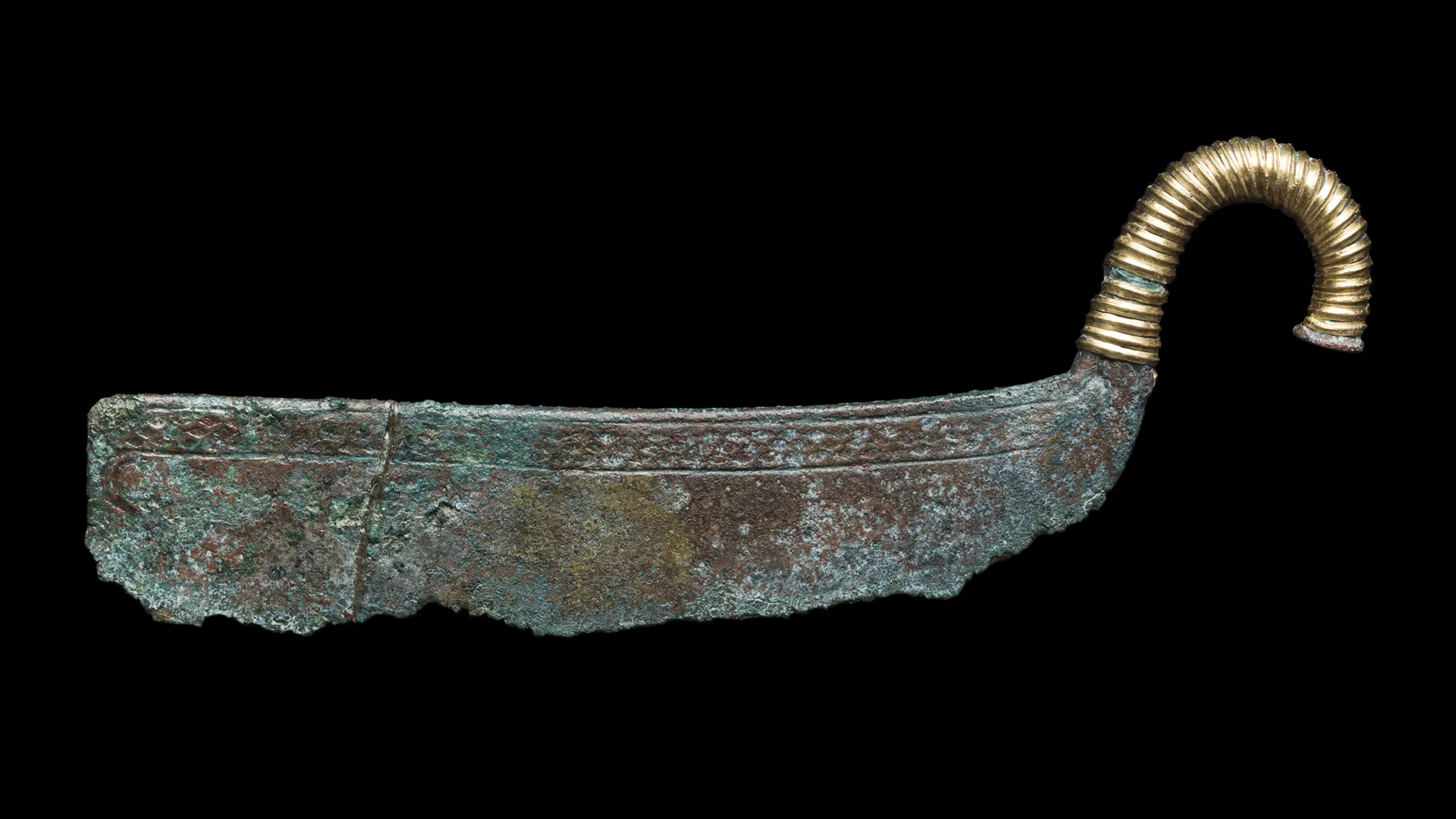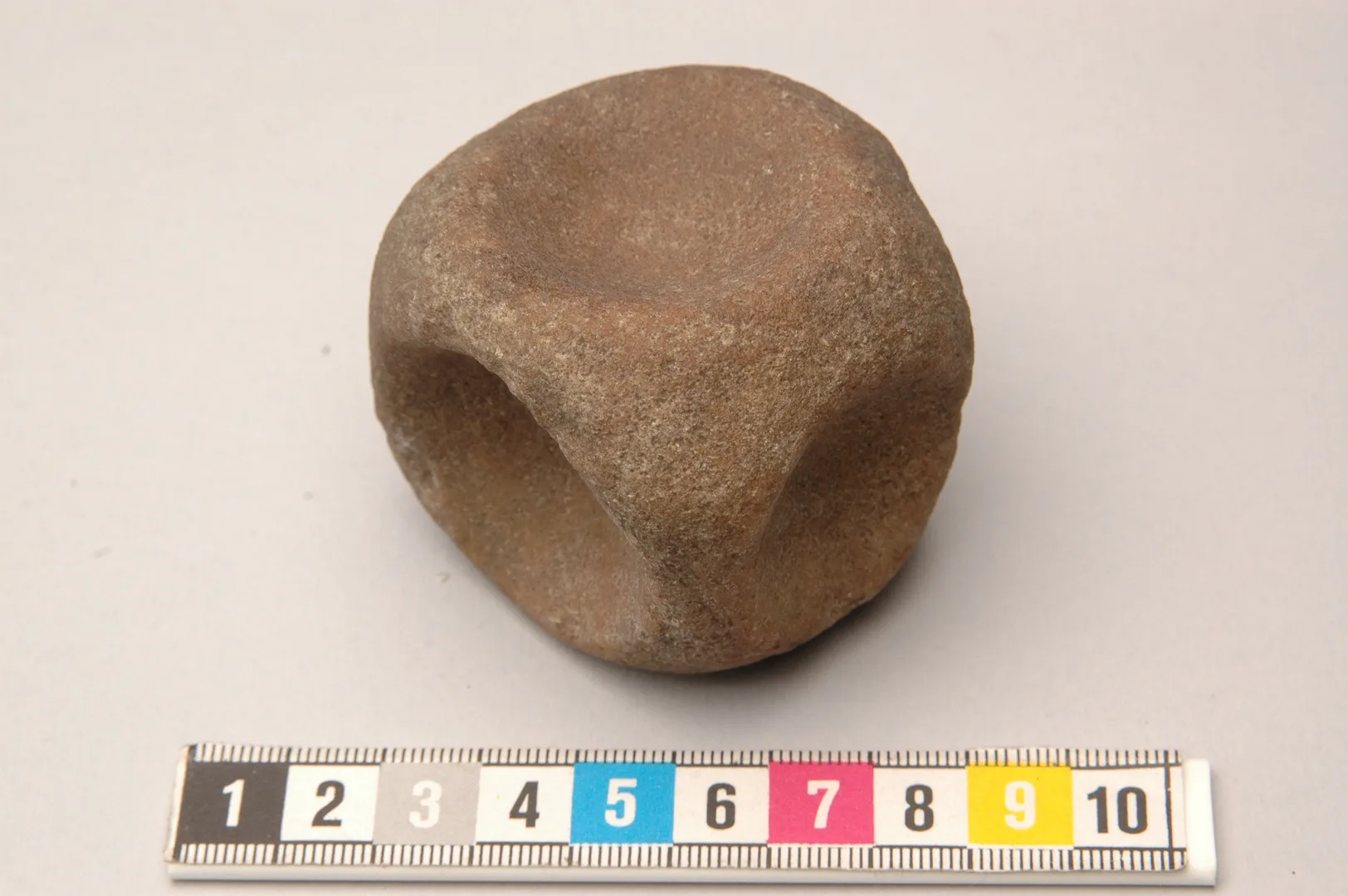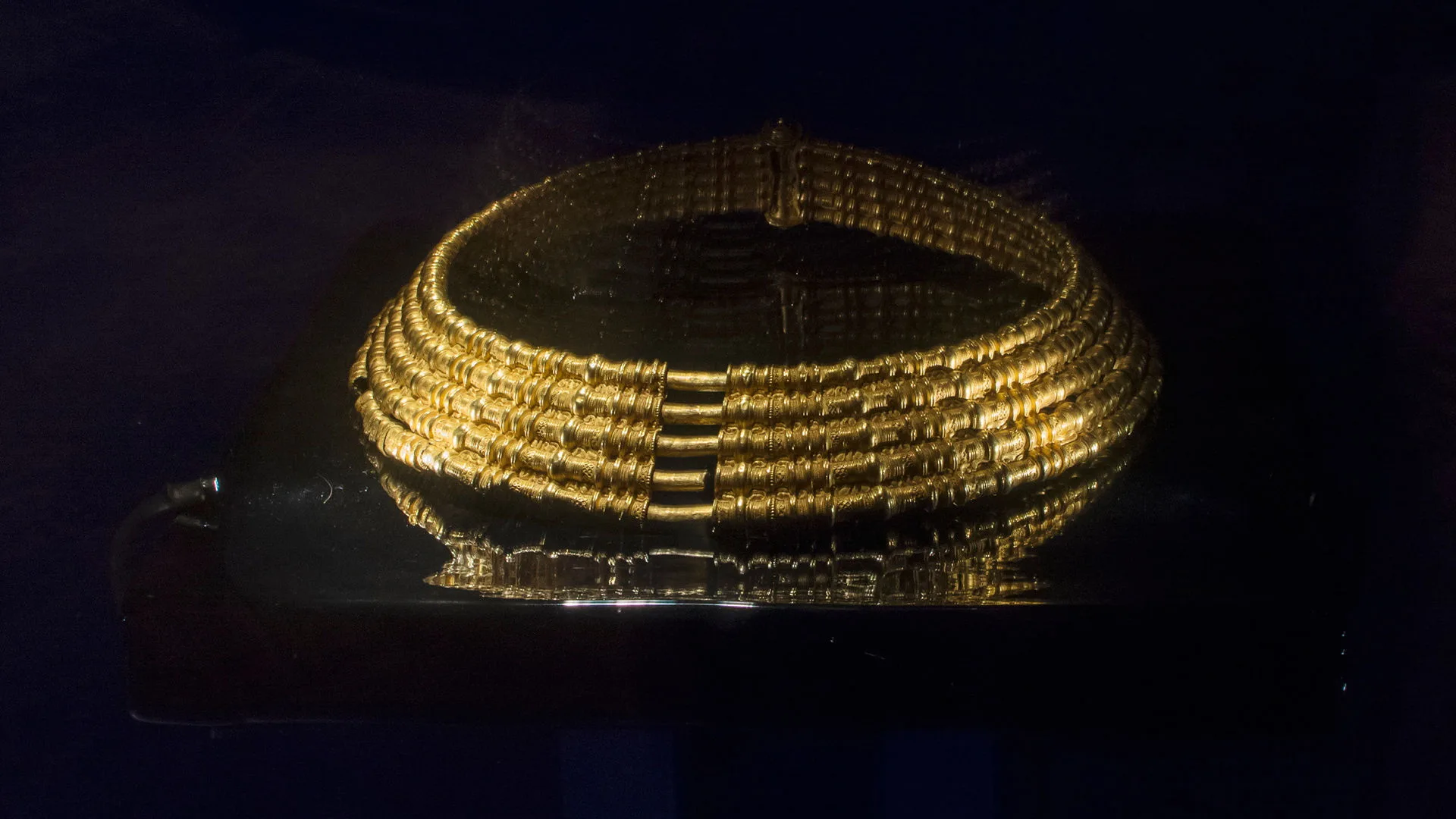The Håga mound
Stone Age
12,000 BC – 1700 BC
Bronze Age
1700 BC – 500 BC
Iron Age
500 BC – AD 1100
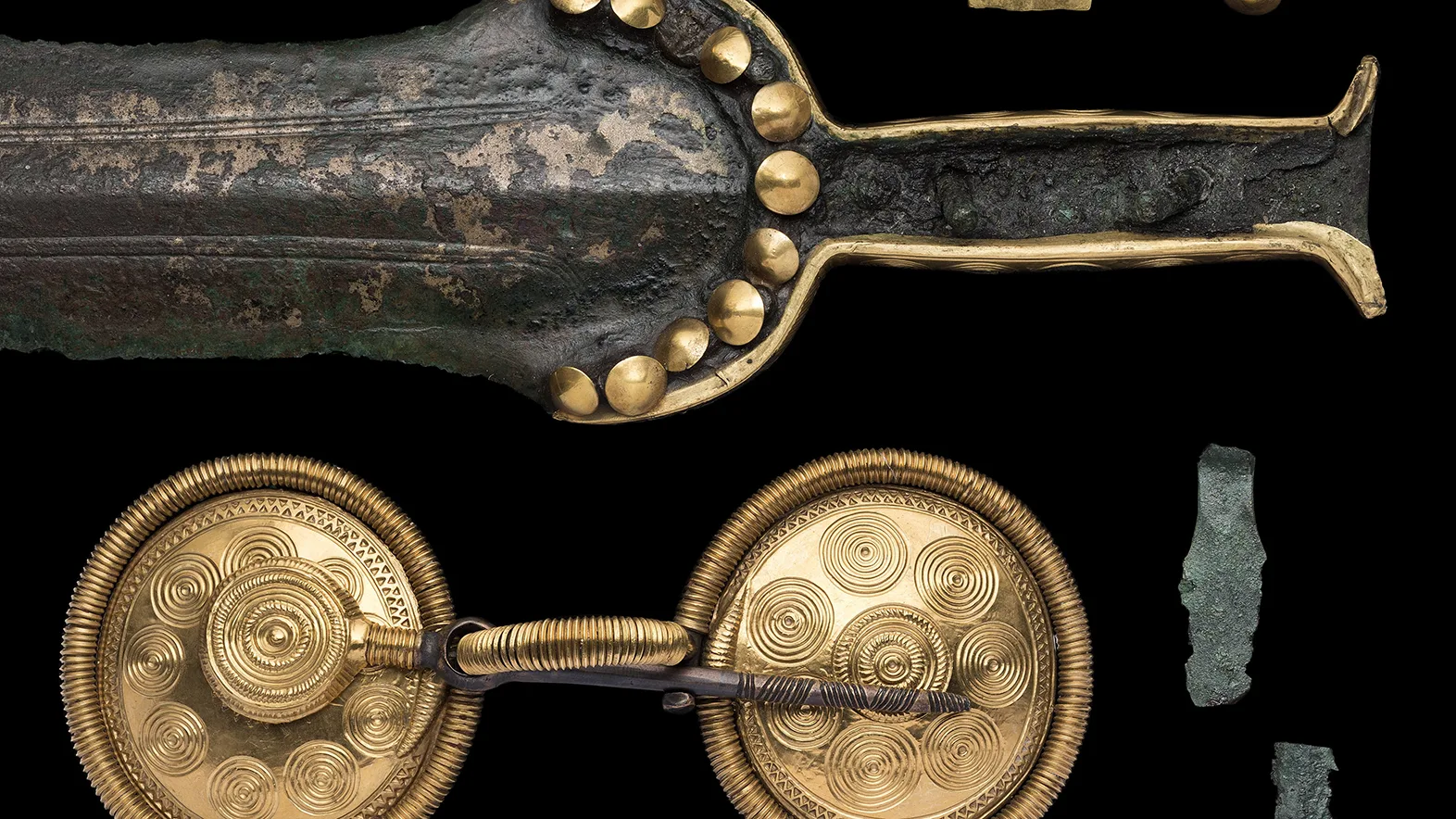
The Håga Mound was excavated between 1902 and 1903 under the direction of Oscar Almgren, who would later become Sweden’s first professor of archaeology. At the start of the excavation, it was believed that the mound dated from the Iron Age and had been raised over King Björn, who lived in the 9th century AD. But it turned out to be far older, around 3,000 years old. The mound has been dated to approximately 1100–1000 BC and remains the richest Bronze Age grave in the Nordic region in terms of gold. Many of the items from the grave are on display in the Gold Room at the Swedish History Museum.
Among the finds are a sword with a gold-covered hilt, double sets of tweezers, and razors, one of which also had gold plating. There were also several buttons decorated with gold, which had once adorned clothing, leather straps or perhaps a bag.

The Håga mound
The man buried in the mound appears to have grown up in the Mälaren region, but his belongings were crafted in southern Scandinavia.
One of the most remarkable objects is a so-called spectacle brooch, made of bronze and covered in gold, decorated with typical circular patterns from the time.
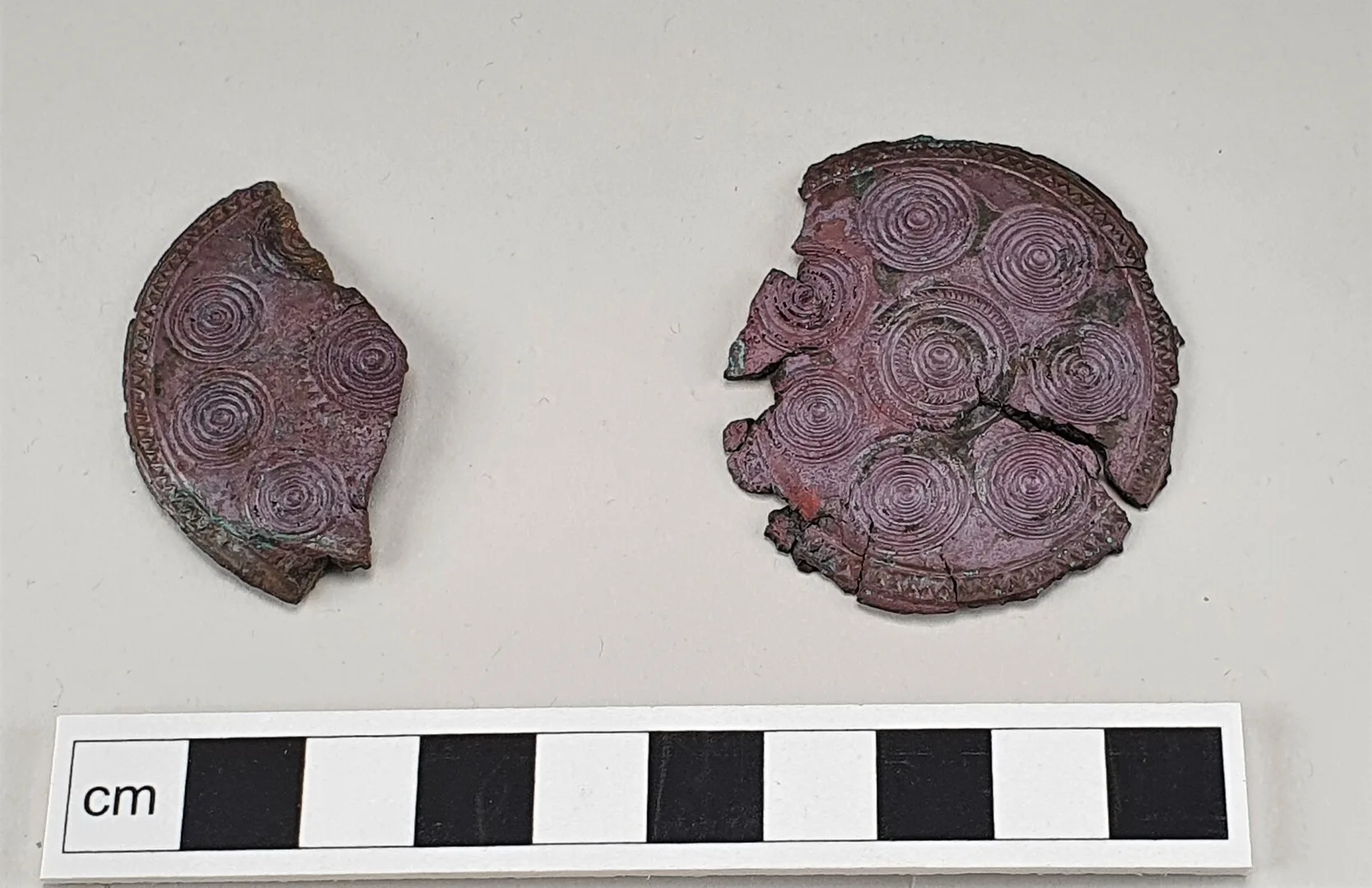
Spectacle brooch
En del av Hågaskatten
On view at Historiska museet in the exhibition Guldrummet
Both the finds and the sheer scale of the mound remain unparalleled in Bronze Age central Sweden. It is likely that one of the region’s earliest chieftains or petty kings ruled from this spot, then located at the inlet of a sea bay that once covered what is now Uppsala.
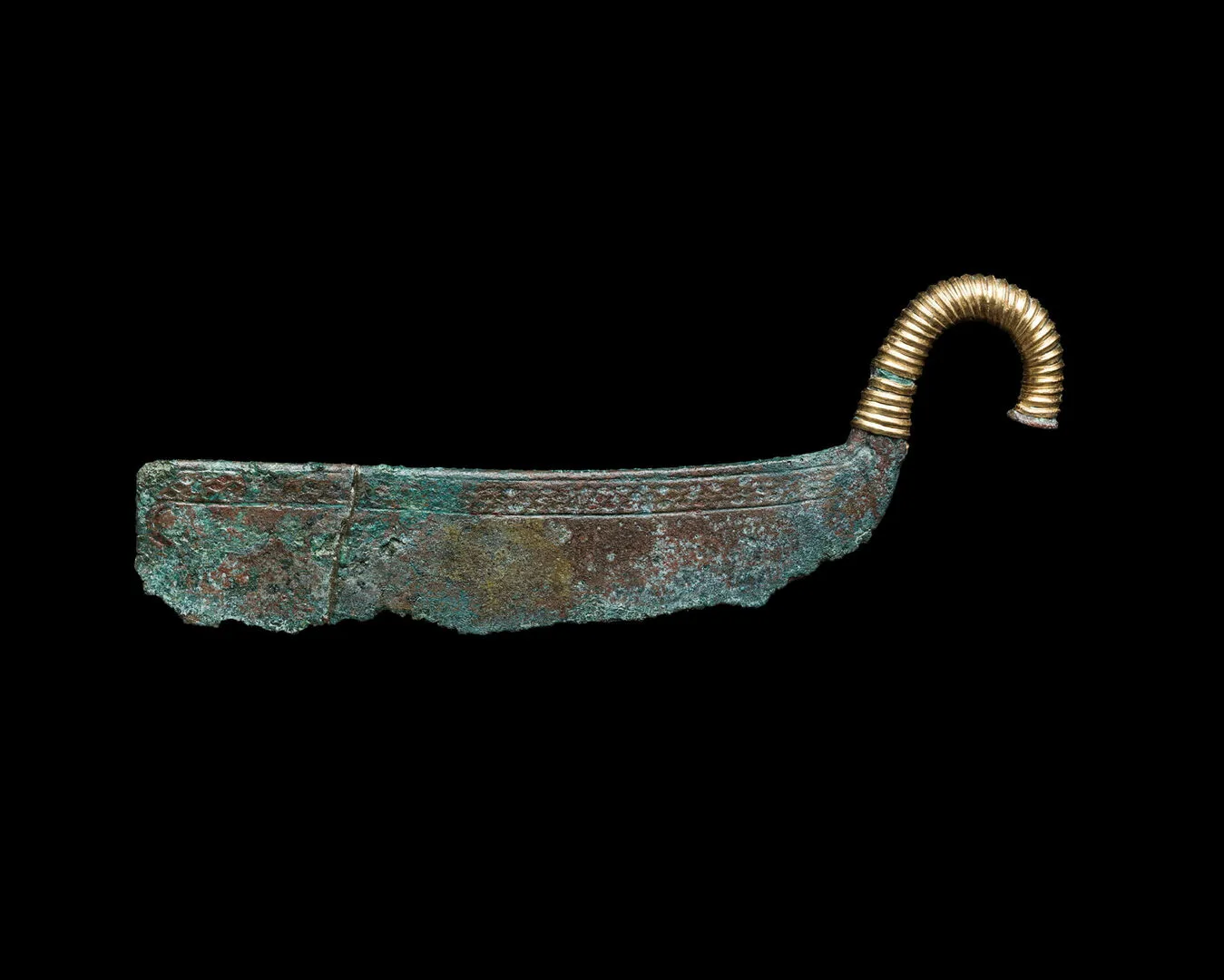
Razor
Part of the Håga mound
On view at Historiska museet in the exhibition Guldrummet
